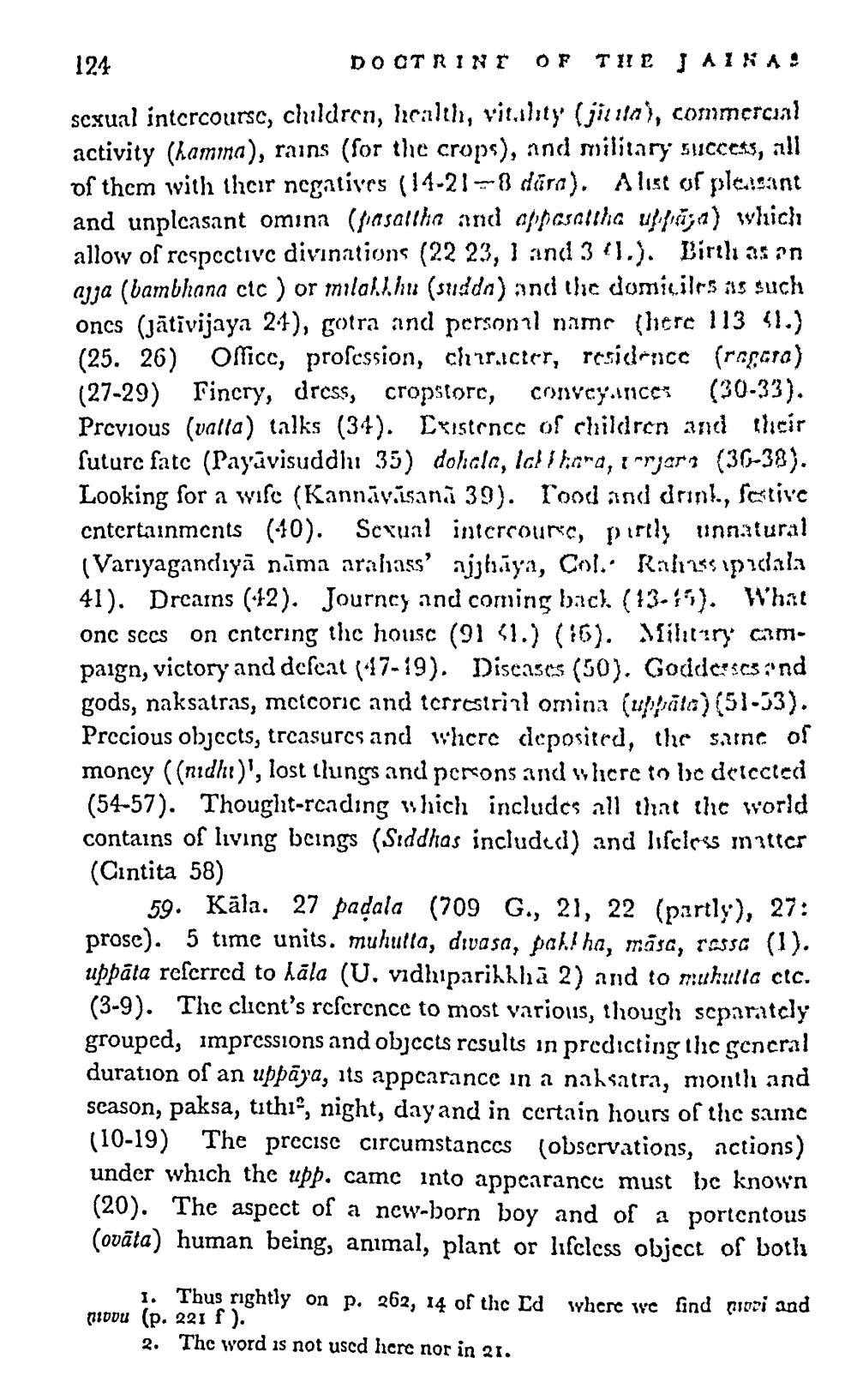________________
124
OF THE JAINA! sexual intercourse, children, health, vitality (jitta), commercial activity (hamma), rains (for the crops), and military success, all of them with their negatives (14-21-8 dāra). A list of pleasant and unpleasant omina (pasaltha and appesatthe uppāja) which allow of respective divinations (22 23, 1 and 3 41.). Birth as an ajja (bambhana ctc) or milahhhu (sudda) and the domiciles as such oncs (Jātīvijaya 24), gotra and personal name (here 113 41.) (25. 26) Office, profession, character, residence (ragara) (27-29) Finery, dress, cropstore, conveyances (30-33). Previous (valla) talks (34). Existence of children and their future fate (Payāvisuddlu 35) dohala, laki hara, venjara (36-38). Looking for a wife (Kannäväsanā 39). Food and drink, festive entertainments (40). Sexual intercourse, partly unnatural (Variyagandıyā nāma arahass' ajjhaya, Col. Rahmsspadala 41). Dreams (42). Journey and coming back (13-15). What onc sccs on entering the house (91 (1.) (16). Military campaign, victory and defeat (47-19). Diseases (50). Goddesses and gods, naksatras, meteoric and terrestrial omina (uppāta) (51-53). Precious objects, treasures and where deposited, the same of money ((nidhi)', lost tlungs and persons and where to be detected (54-57). Thought-reading which includes all that the world contains of living beings (Siddhas included) and lifeless matter (Cintita 58)
DOCTRINT
59. Kāla. 27 padala (709 G., 21, 22 (partly), 27: prose). 5 time units. muhutta, divasa, pakl ha, māsa, rassa (1). uppāta referred to hala (U. vidhiparikkha 2) and to muhulla etc. (3-9). The client's reference to most various, though separately grouped, impressions and objects results in predicting the general duration of an uppāya, its appearance in a naksatra, month and season, paksa, tithi2, night, day and in certain hours of the same (10-19) The precise circumstances (observations, actions) under which the upp. came into appearance must be known (20). The aspect of a new-born boy and of a portentous (ovata) human being, animal, plant or lifeless object of both
where we find puri and
I. Thus rightly on p. 262, 14 of the Ed novu (p. 221 f).
2. The word is not used here nor in 21.




